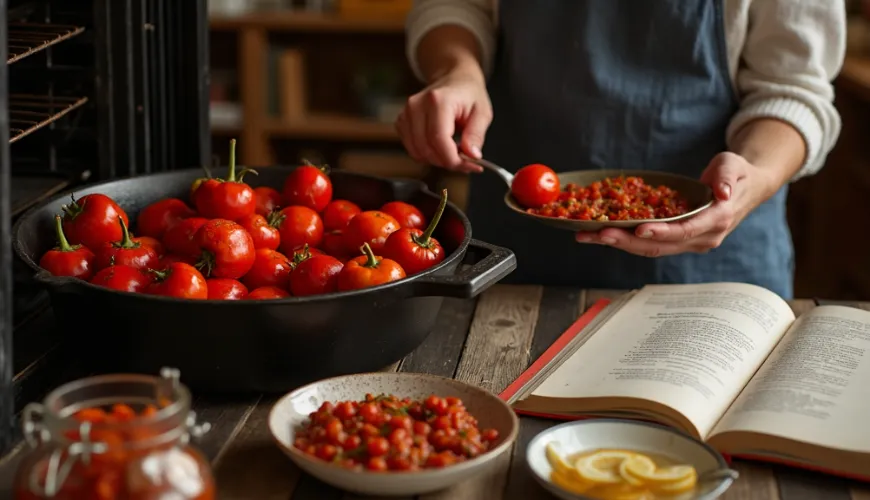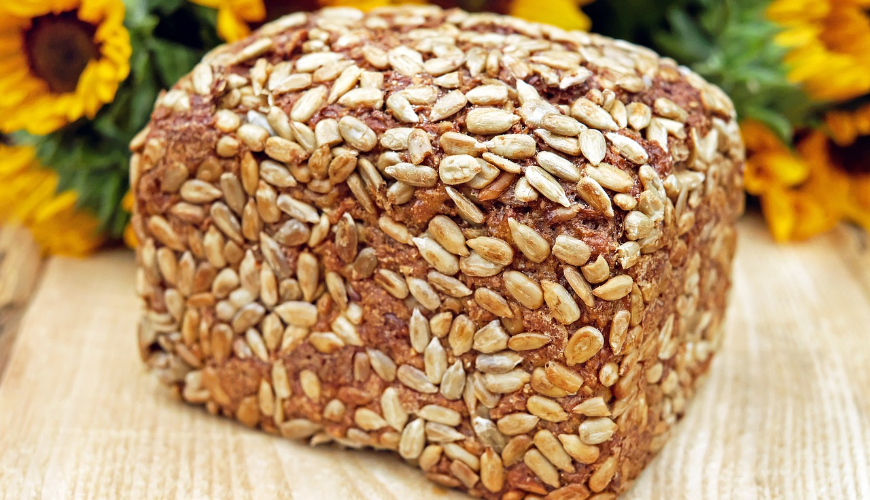
The recipe for ajvar brings the taste of the Balkans into your kitchen.

Ajvar - Balkan Treasure in a Jar You'll Love
When you mention the Balkans, many people think of summer vacations by the sea, hospitable people, and plates full of delicious food. Food is deeply embedded in the culture and daily life of this region. One of the typical culinary treasures that has captured the hearts of gourmets far beyond the borders of the former Yugoslavia is ajvar – a spicy vegetable spread whose taste and color are reminiscent of the southern sun.
This bright red dish, whose name is allegedly derived from the Turkish word havyar (caviar), has many variations, but the base remains the same: peppers, a bit of oil, garlic, and sometimes eggplant. And that's the magic of ajvar – in the simplicity and quality of the ingredients used.
Macedonian Ajvar as a Story of Tradition
The most famous and respected variant is undoubtedly Macedonian ajvar, which even has protected geographical indication status within the European Union. In Macedonia, its preparation has become an annual ritual. At the end of summer, when sweet red peppers ripen in the markets, families gather to bake, peel, and stir all day long. The result is dozens of jars meant to supply them throughout the winter.
The preparation of traditional ajvar is time-consuming, but as the local saying goes: "Ajvar is not made for tomorrow, but for winter." In some families, its production is passed down from generation to generation as a valuable family heritage. And it's no wonder – the taste of well-prepared homemade ajvar is full, sweet, slightly smoky, with a gentle bite on the tongue.
The Real Recipe for Ajvar - How to Make It at Home
If you're tempted to prepare real ajvar at home, the ideal time to start is at the end of summer or early autumn when the peppers are in their best condition.
Ingredients:
- 3 kg of red bell peppers (or meaty peppers)
- 1 large eggplant
- 3–4 cloves of garlic
- 150 ml of sunflower oil
- Salt to taste
- Optionally, chili or hot pepper for a spicier version
Method:
- Wash, dry, and bake the peppers and eggplant in the oven (or on a grill) at 220 °C until the skin blackens. This phase gives the ajvar its typical slightly smoky taste.
- Place the baked vegetables in a bowl and cover with a towel or cling film – the skin will then easily peel off. Let it rest for 15 minutes.
- Peel off the skins and stems and remove the seeds. Blend or grind the vegetables with a mill – depending on the texture you prefer.
- Heat the oil in a pot and add the pepper and eggplant mixture. Cook on a low flame for 1–2 hours, stirring frequently, ideally with a wooden spoon.
- Finally, add crushed garlic, salt, and optionally chili. Cook for another 10–15 minutes.
- Fill hot ajvar into clean jars, seal well, and turn upside down, or sterilize.
The result? A creamy, aromatic spread that tastes great on fresh bread, with roasted meat, as a side to cheese, or even as a base for pizza.
Ajvar Without Eggplant? It's Possible
For those who don't like eggplant or avoid it for various reasons, there is a simpler recipe for ajvar without eggplant. Although eggplant helps smooth the texture and flavor, it can be omitted without losing the charm of the result.
Simply increase the amount of peppers, or add a small amount of roasted tomatoes for flavor balance. The result is a softer, sweeter spread that suits even small children or those who prefer milder flavors.
Balkan Ajvar in the World and in the Kitchen
Over time, ajvar has spread beyond the Balkans. Today, it can be found on supermarket shelves all over Europe, but the homemade version remains unbeatable. In countries like Serbia, Bosnia, or Croatia, it is used similarly to mustard or chutney. It pairs excellently with grilled sausages, ćevapi, or even roasted potatoes.
One of the most convincing proofs of how versatile ajvar is, is its natural connection with modern dietary trends – it is vegan, gluten-free, and full of fiber. Combined with whole grain bread or as an ingredient in a sandwich, it represents not only a tasty but also a nutritionally valuable choice.
A Story from the Countryside - Ajvar as a Social Event
In southern Serbia, in a village near the town of Leskovac, an annual festival called "Ajvarijada" is held. Locals compete to make the best ajvar, and the jury's selection is taken very seriously. Besides, it is a great social event – people bring their jars, taste, dance, and share recipes.
One of the participants, Mrs. Rada, makes ajvar according to her grandmother's recipe. "Everything is in patience and quality peppers. You mustn't rush it. Good ajvar is like wine – it needs time," she says with a smile. Her version, slightly spicy with a drop of apple cider vinegar, won the first prize in 2019.
Ajvar at Home and Ecologically
Making homemade ajvar is not only a culinary experience but also a step towards a more sustainable lifestyle. Instead of store-bought versions in plastic packaging, you can use seasonal vegetables from the market or your garden and can them in reusable jars. Moreover, you decide how much oil or salt to use, thus tailoring the final product to your needs.
And if you don't feel like spending the whole day by the stove, you can find local producers who make ajvar in small batches – ideally without preservatives and from organic ingredients. This way, you support the local economy and get a tasty product with a story.
Ajvar is a great example of how a simple recipe with a few ingredients can transform ordinary food into a gourmet experience. Whether you prefer the traditional Macedonian style or are looking for a quicker variant without eggplant, one thing is certain – homemade ajvar will find a place not only in your pantry but also on your table.

